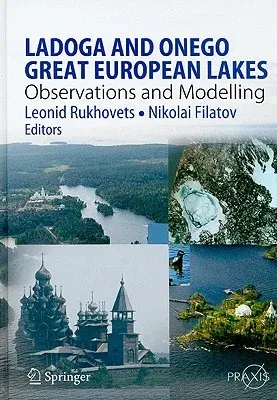Lakes Ladoga and Onego are the greatest lakes in Europe. With a surface
area of 17891 km2 and a volume of 902 km3, the
former is one of the top fifteen world's freshwater lakes and is only
slightly smaller than Lake Ontario. Lake Onego's surface area is 9600
km2 and it has a volume of 292 km3. The watershed
of Lake Ladoga (258000 km2) extends through Northwestern
European Russia and the eastern part of Finland, including the large
Lakes Ilmen and Saimaa, and together these Great European Lakes are an
important link in the Caspian-Baltic-White Sea waterway system. Their
ecological state affects the water quality of the Neva River, the Gulf
of Finland and the Baltic Sea. Thus any changes affect the operational
use, environmental protection and management of water resources of a
wide area and concern such issues as drinking, recreation, transport and
energy.
The anthropogenic impact on the Lake Onego ecosystem is mostly
determined by the sewage waters of the Petrozavodsk and Kondopoga
industrial centres, while the river inflow makes the most impact on Lake
Ladoga. Although the anthropogenic stress on the water ecosystems of the
Great European Lakes has decreased over the last 15 years, there has
been some simultaneous evidence of global warming. There is not enough
current data to identify the climate-induced changes in lake ecosystems,
but there is proof that the main cause of lacustrine ecosystem changes
is determined by anthropogenic factors.
Coupled thermohydrodynamic and ecosystem models for Lakes Ladoga and
Onego have been developed to study the contemporary situation, to
understand the main mechanisms of the ecosystem transformation, and to
learn what may happen in future under the varying antropogenic impact
and climate changes. Lake Ladoga preserves its weak mesotrophic status
while Lake Onego can be characterized as oligotrophic. Economic growth
during the last seven years has led to the increasing anthropogenic
impact on both their ecosystems.
The Great European Lakes are attracting the increasing attention of both
researchers and end-users. This book is a synthesis of multifaceted
interdisciplinary studies conducted by a team of experts in limnology,
geography, biology, mathematical modeling and economy. The editors,
Professors Rukhovets and Filatov, are the authors of numerous articles
and books and are recognized as the foremost experts in their fields.
Professor Rukhovets has been Director of the Institute of Economy and
Mathematics in Saint-Petersburg and head of the laboratory of
mathematical modeling since 1998 while Professor Filatov is currently
Director of the Northern Water Problems Institute in Petrozavodsk,
Russia.

